The quarter horse is one of America’s oldest and most popular breeds – and for good reason. Hard-working and versatile, the American Quarter Horse excels in a multitude of disciplines. Most well-known for breaking speed records over short distances, quarter horses delight and inspire people all over the world. Here is a comprehensive guide with everything you wanted to know about the American Quarter Horse – and more!
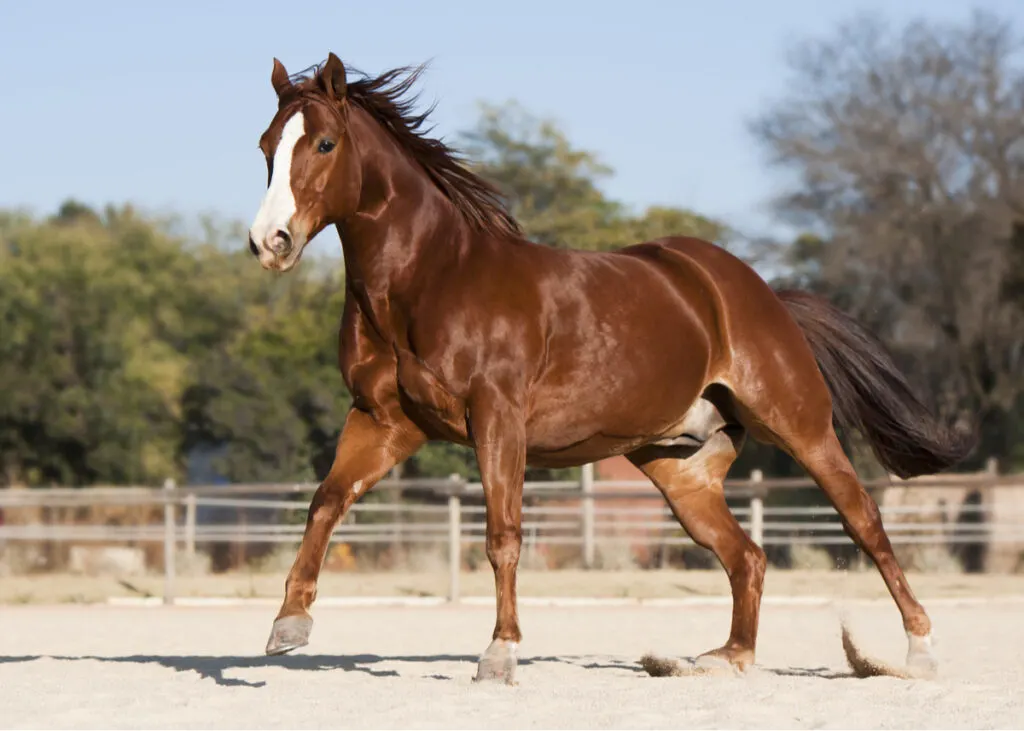
Table of Contents
The History of the American Quarter Horse
Origins of the Quarter Horse
The roots of the American quarter horse run straight through the streets of colonial America. In the 1600s, early American settlers worked their English thoroughbred imports in the fields during the week, and race them through the streets of the town on the weekends.
However, it was expensive and impractical to build the long flat tracks we use today. Shorter, straighter distances of flat road were used instead – often down the center of town!
As settlers moved west into the plains, they also required smaller and more agile horses. Breeders combined their tall, graceful English thoroughbreds with smaller horses that belonged to the Chickasaw tribe. These horses came from Spanish barb stock of the central American conquistadors, and they excelled at endurance riding, navigating the wilderness, and hunting bison.
Eventually, these Thoroughbred/Chickasaw horse blends added some wild mustang and the result? A compact, intelligent, athletic, powerful and speedy little horse. The American Quarter Horse was born. (source)
American Quarter Horse Association
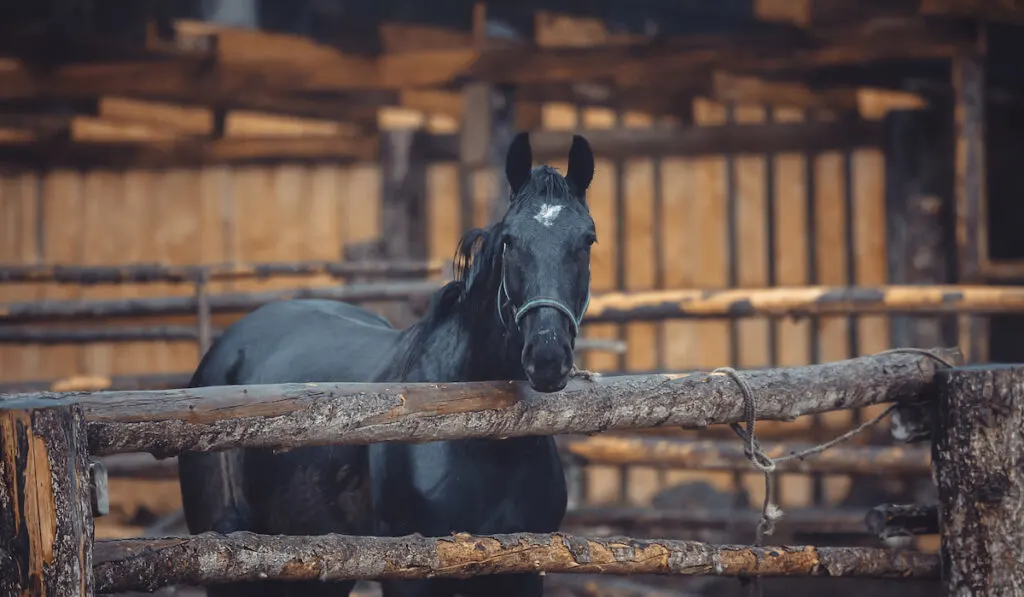
Founded in 1940, the American Quarter Horse Association (link) boasts one of the largest breed registries in the world. With over 3 million registered quarter horses in the US and more than 300,000 members worldwide, it’s easy to see why.
The AQHA seeks to “record and preserve the pedigree of the American Quarter Horse while maintaining the integrity of the breed and welfare of its horses…and to ensure the American Quarter Horse is treated humanely, with dignity, respect, and compassion at all times.” It also runs the American Quarter Horse Hall of Fame and Museum on the same property as the AQHA headquarters in Amarillo, Texas.
Foundation Sires
There have been many famous and top-performing quarter horses over the years, but these are a few stallions that made large contributions to the breed:
- Wimpy: As the first official quarter horse stallion registered with the AQHA, Wimpy was one of the foundation horses of the quarter horse breed.
- Steel Dust: Favored by cowboys for their good cow sense and athletic physiques, the progeny of steel dust succeed in rodeo competitions today. (source)
- Speedy/Driftwood: An excellent rodeo horse, Speedy could win any event he entered; especially calf-roping. He produced athletic offspring with a smooth ride and gentle disposition. (source)
- Impressive: A modern halter-type quarter horse, this popular sire produced many handsome offspring. However, any horse with Impressive in its bloodline can possibly carry the gene for HYPP disease: a genetic disorder that causes muscle spasms and paralysis.
AQHA Registration Requirements
The AQHA studbook is mostly closed, but with so many registered quarter horses, breeders can narrow the scope of their lines and produce horses specific to their needs, depending on the discipline.
“The American Quarter Horse…has been bred and developed to have a kind and willing disposition, well-balanced conformation and agile speed. There is an AQH for every purpose.”
AQHA Official Handbook
Horses must have two AQHA pedigreed parents to be registered. However, horses bred to thoroughbred jockey club registered horses may be registered in the appendix registry. If parental bloodlines are uncertain, the AQHA may require DNA verification.
The Appendix Horse
The quarter horse studbook is only open thoroughbred horses registered with the Thoroughbred Jockey Club. The resulting offspring is a sanctioned crossbreed called the Appendix. The ideal result is a horse with the calmer disposition of a QH, but the speed and endurance of a thoroughbred. These horses are popular in English events due to their graceful appearance and athleticism.
To learn more about the Appendix Quarter Horse, including how they can advance to become “regular” Quarter Horses, check out my post: Appendix Quarter Horses: 9 Facts You May Not Realize Are True.
Characteristics of the Quarter Horse
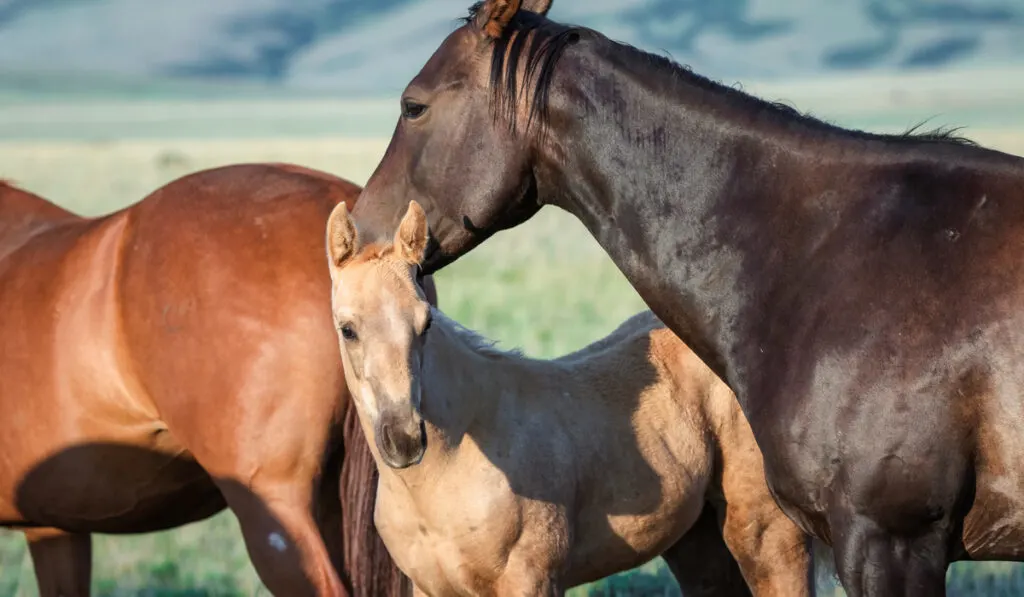
Conformation
Over the years, the desired conformation of a quarter horse has changed significantly. Because these horses are so versatile, they’re now bred for specific disciplines: a Quarter Horse that wins a halter class is not the same horse that will succeed over fences, or excel wrangling cows out on the ranch.
There are two separate categories of conformation requirements in the AQHA rulebook: halter horses and ranch horses. Halter horses have the “aesthetically desirable” quarter horse body. Ranch horses are better suited for ranch work or athletic events, and have a less aesthetic focus to them.
- Halter horses: Nicknamed the “bulldog” type, halter horses tend to be thick and muscular. Breed standards include the following characteristics: aesthetically pleasing, well-proportioned and uniformly muscular, deep girth, short back, strong loin, and well-defined muscles in the chest and legs.
- Ranch horse: “The purpose of ranch conformation is to preserve American Quarter Horse type selecting well-mannered individuals in the order of their resemblance to the breed ideal and that are the most positive combination of balance, structural correctness, and movement with appropriate breed and sex characteristics and adequate muscling”. These horses are balanced, well-proportioned, muscular, athletic and well moving. As performance horses, aesthetic is less important than function.
There is criticism in the QH community against horses bred for what some people believe to be conformation faults – but because there are so many registered quarter horses, it’s not difficult to find one to suit your needs.
Quarter Horse Height
Quarter horses typically stand about 15 to 17 hands high, depending on the type. Taller hunter types will have longer legs and leaner frames, and stocky halter types will be shorter and more thickly muscled. It is, however, possible to find horses outside that common range. Registered Quarter Horses might be as small as 13 hands or even as tall as 18 hands. The registry does not have a minimum or maximum size. Registration is awarded based on parentage.
Quarter Horse Weight
Quarter Horses typically weigh between 1000-1200 pounds. This is good news for heavier riders (check out my post on choosing the right sized horse for your height and weight), but potentially bad news for the horse’s skeletal system. Too much muscle mass on a horse’s frame can cause problems with a horse’s joints or feet. The effects of this are most commonly seen in halter horses who sometimes have large, muscular bodies with disproportionally tall feet.
Quarter Horse Colors
Quarter horses are traditionally solid-colored. They may possess white markings, but the registry has strict regulations on how much of a horse’s body can be white—markings beyond the face and legs will require a horse to be DNA tested. Paint coat patterns are discouraged by the AQHA registry, but they occasionally appear.
The AQHA recognizes 17 different base colors: chestnut, sorrel, black, brown, gray, bay, palomino, buckskin, cremello, perlino, white, dun, red dun, grullo, red roan, bay roan, and blue roan. (source) It is interesting to note that chestnut and sorrel are genetically the same thing. The shades may be different but both horses will test ee (red).
Rare Colors
Champagne: Some Quarter Horse lines carry the champagne gene. Most will trace back to the Quarter Horse Stallion, My Skip Ashwood. Champagne horses are most notably recognized for horses with metallic, shiny coats but other shades appear with this dilution as well. Pictured below is a gold champagne Quarter Horse stallion I once owned. He is genetically a chestnut with a champagne gene.
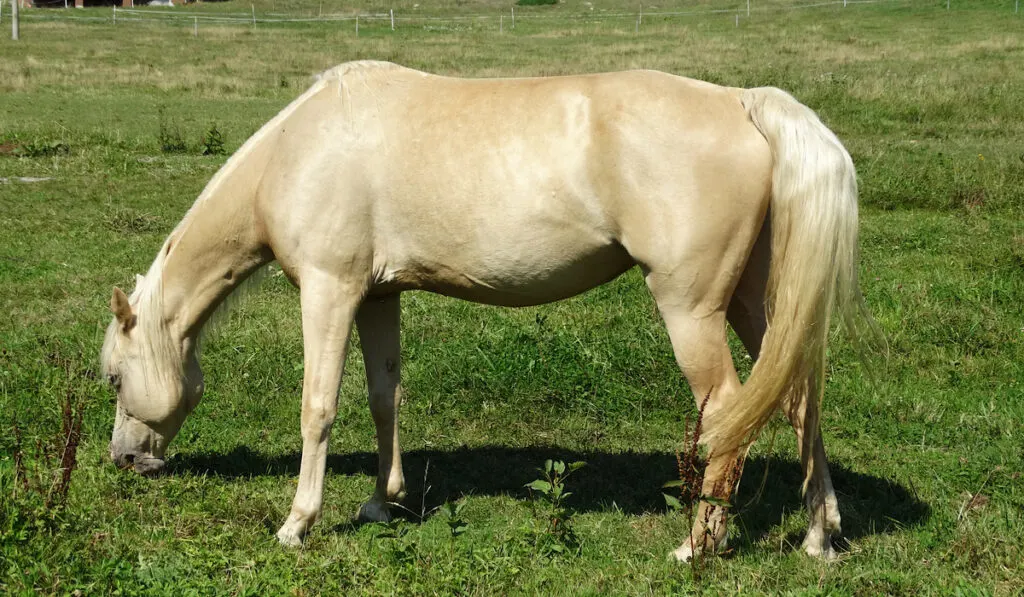
Silver: There is a very small number of registered Quarter Horses that carry the silver gene. This gene does not affect red (chestnut or sorrel) horses but, on a horse with a black gene (E_) it acts as a dilution gene of sorts. This is the color that is made most famous by “black horses with white manes and tails”. On a black silver horse, the mane and tail will be almost white. Sometimes this color is also referred to as “Silver Dapple”. Pictured below is a black silver Icelandic pony.
Appaloosa: There is a very small number of registered Quarter Horses with appaloosa paint coloring. The stallion, Reminic In Spots, made this anomaly famous. He carries the LP gene and is double registered Appaloosa (check out the Appaloosa Breed Profile). Check out this grandson of Reminic on his Facebook page.
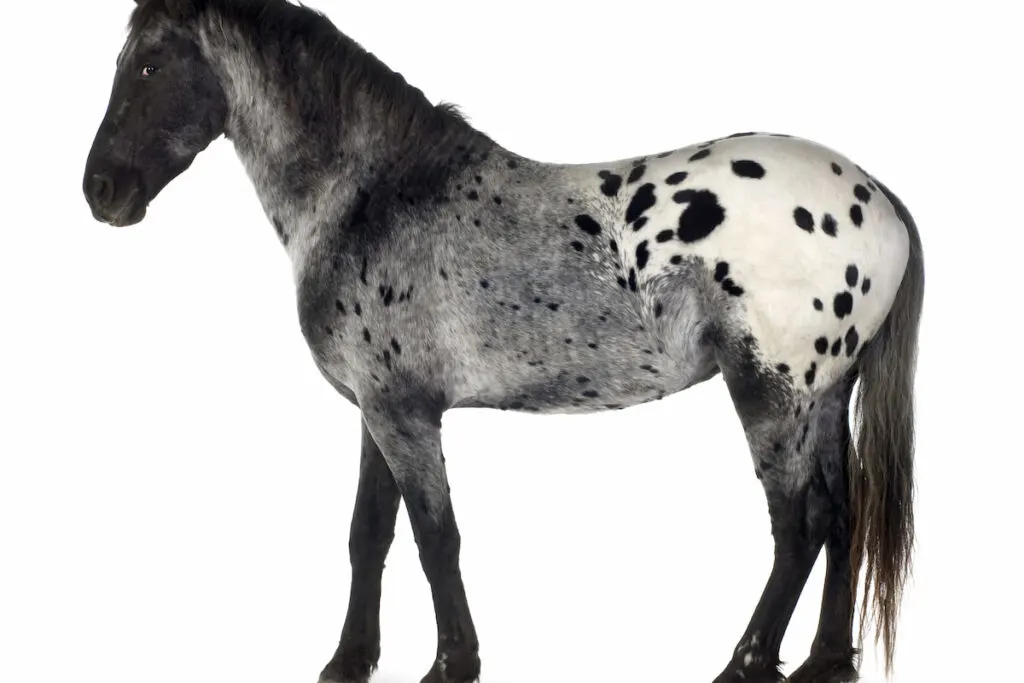
Quarter Horse Temperament
Quarter horses sometimes have a bad reputation for being “hotheaded” and feisty. This is because successful racehorses are expected to explode out of the gate at a gallop, and maintain that pace for several hundred yards. However, working ranch horses can’t be galloping off into the wilderness all willy-nilly.
Instead, a quarter horse might be feisty and need a firm hand; but it’s generally an intelligent, trainable horse that can be easily taught how to be cool under pressure, or quickly chase after a rogue cow when necessary. These horses are designed to be versatile in a variety of disciplines, and they need versatile temperaments to match.
The “hot-blooded” nature of thoroughbred racehorses add to the boldness and energy of the QH, but the infusion of hardy working cow ponies produced a level-headed intelligence that is hard to beat.

Each Quarter Horse is an individual and temperament can’t really be generalized. Typically racing bred horses and cutting bred horses will be hotter, ranch bred horses will be quieter but able to kick it in gear if they need to. A lot of Quarter Horses have quiet, amenable dispositions which make them a great breed to consider as a first horse or for beginner riders.
Disciplines
While many breeds can be successful at your typical rodeo events, quarter horses remain the favorite breed. The vast majority of successful barrel racing and reining champions are quarter horses.
Western Rodeos
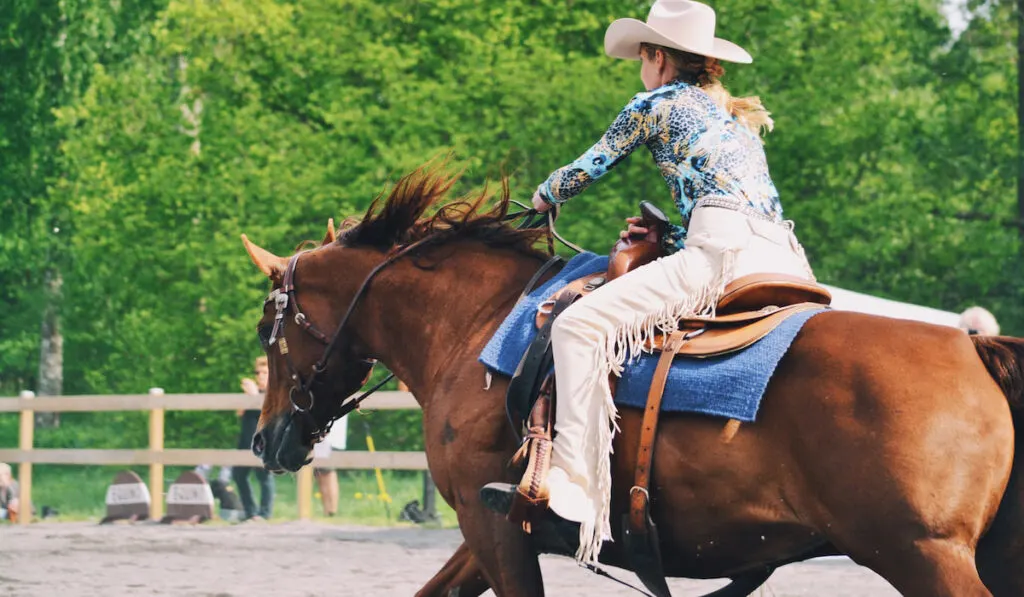
You’d be hard-pressed to find a more popular or successful breed of horse at the western rodeo. Quarter horses excel in all rodeo categories. Bred for ranch work, these intelligent and hard-working horses make the perfect cowboy companions.
- Barrel Racing: A horse and rider team executes a cloverleaf pattern around three barrels. The “run” is timed, and the fastest team wins. Quarter horses are small, agile, and fast. Barrel racing showcases these skills. (Check out our Beginner’s Guide to Barrel Racing)
- Reining: Competitors execute a pattern on the flat that includes several different movements, showcasing the horse’s ability to listen to its rider as though they were out on the ranch working cattle. A good reining horse is intelligent and agile; it can stop and turn on a dime, and seems to have a psychic connection with its rider.
English Events
Though quarter horses were bred for the western world (and it’s true, they make some of the best rodeo horses), they’ve become increasingly popular in English events as well.
- Hunter/jumper: Pleasure horses in any discipline are expected to carry themselves with grace and strength. Quarter horses excel on the flat because of their pleasant dispositions, but they can gallop and carry riders over long jumping courses with ease.
- Eventing: This is an English endurance event that tests a horse’s skills in show jumping, cross-country, and dressage. Quarter horses are athletic and love to work. Though many are built “downhill” (in which their croup is higher than their withers) making dressage difficult, they are strong and agile. Bonner Carpenter achieved a successful eventing record with her Quarter Horse Acapulco Jazz.
Quarter horses are a truly versatile breed. They excel in the ring, out on the trail, or hitched to a wagon for a casual Sunday drive. However, each horse is an individual, and people should consider that when deciding which quarter horse would suit them best for their needs.
Quarter Horse Racing
The quarter horse owes its name to the sport of quarter horse racing. Early settlers wanted a horse that could work on their farms during the week, and race through town on the weekends. Quarter horses are the fastest horses over a quarter-mile distance (400 yards): hence the name “quarter horse.”
Quarter Horses often compete on the track against purebred Thoroughbreds and they often win too! In fact, as I mentioned in my article about the fastest breeds of horse, a scientific study determined Quarter Horses are faster than both Thoroughbreds and Arabians.

Quarter Horses vs Thoroughbreds
Before thoroughbreds were galloping their way to the Triple Crown, quarter horses were sprinting down the dirt roads of their home towns of Virginia more than a hundred years earlier. Now, both quarter horse racing and thoroughbred racing are popular sports, but they operate in different ways:
| Quarter Horse Racing | Thoroughbred Racing | |
|---|---|---|
| Breed Strengths | Sprinting with explosive power out of the gate. | Maintaining overall high speeds and endurance. |
| Track Length | 5/8 ths of a mile– 1.5 miles | Maintaining overall high speeds and endurance. |
| Conformation | Short, stocky, powerful hindquarters | Tall, long, lean, leggy |
| Country of Origin | America | England |
| Timing | Timer begins at the opening of the gate | Timer begins after a short period, or “run-up” |
| Top Speed | Top speed: 55 mph | Top speed: 45 mph |
Some Quarter Horses contain a lot of thoroughbred bloodlines, which give them large chests, muscular legs, and exceptional athletic abilities. They continue to breed thoroughbreds to quarter horses today to improve the breed.
Genetic Diseases
Several faulty genes within quarter horse bloodlines are linked to destructive diseases. Thankfully, with the introduction of DNA testing, they are disappearing from the gene pool. People considering a quarter horse should consider testing for these diseases as necessary.
- Hyperkalemic periodic paralysis (HYPP): Causes uncontrollable muscle twitching or paralysis. Predominantly affects thickly muscled halter-type horses.
- Malignant hyperthermia (MH): Causes high body temperature, fast heart rate, and muscle rigidity. This is an especially dangerous condition for a hard-working ranch horse.
- Hereditary equine regional dermal asthenia (HERDA): Causes the skin to form improperly, leading to sores and disfiguring scars. Most horses with this disease do not survive more than 5 years, as the skin can split and separate from the horse’s body altogether.
- Equine polysaccharide storage myopathy (PSSM): Causes “tying up” (muscle rigidity, stiffness, cramps). Many draft breeds are predisposed to this disease, and it is generally controlled with a low-starch diet.
- Lethal White Overo (LWO or OWLS): Lethal in the homozygous state, if two carriers are bred together the resulting foal has a 25% chance of being born with the disease and will need to be humanely euthanized. This disease is 100% preventable by testing the stallion and mare and not breeding two carriers together.
- Glycogen Branching Enzyme Deficiency (GBED): This disease is recessive and only affects horses in the homozygous state. It affects the way the horse uses glycogen branching enzyme. The horse is not able to use glycogen effectively which can lead to muscle weakness. Almost all foals are euthanized or die by 18 weeks of age. This disease is 100% preventable by testing both parents.
The 5-Panel Test for Horses
The 5-Panel test for horses checks for five genetic diseases: GBED, HERDA, MH, PSSM and HYPP. This results of this test are typically advertised for any horse that might be a breeding prospect. AQHA has negotiated discount rates for this group of tests and will also display the results of the HYPP test on the horse’s AQHA papers. (source)
Quarter Horse Lifespan
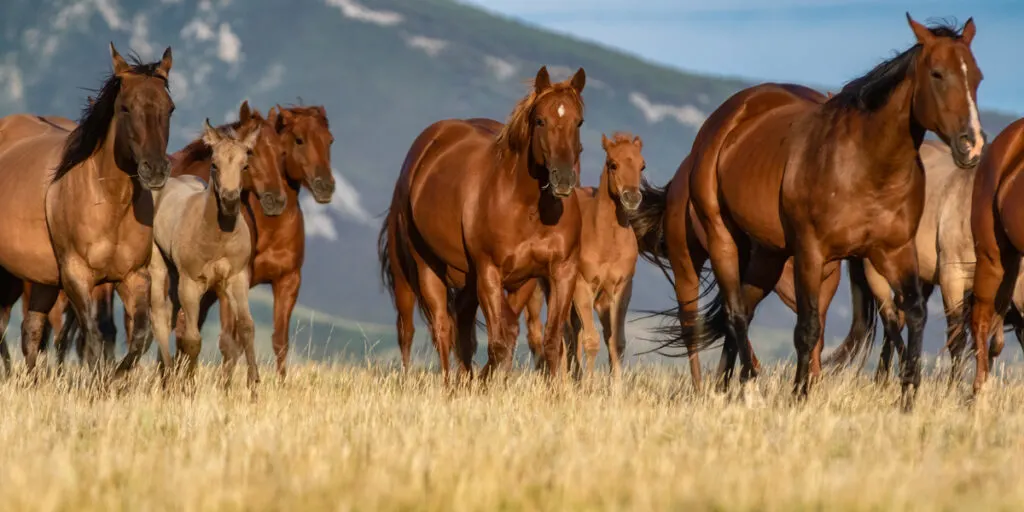
In general, quarter horses are healthy and sound, and will be good companions for 25-30 years if treated properly.
Breed Criticism
Quarter horses are popular, versatile horses. But they are not without fault, and there are some things a prospective enthusiast should know before jumping into the world of the quarter horse. Many of these things are a matter of opinion, so each individual must do their own research and make up their minds for themselves.
The desired conformation in the show ring is often faulty. The prevalence of heavy bulldog type halter horses results in animals that might look aesthetically pleasing, but halter horses are often useless for much else and live with health problems or soundness issues.
“Line-breeding” (breeding horses to direct siblings or descendants) of popular studs creates genetic problems. There’s a popular saying: “if it works, it’s line-breeding. If it doesn’t, it’s inbreeding.” Genetic testing is now available to help eliminate some of these genetic issues that were exacerbated by line breeding.
A fancy pedigree should not be the only thing a prospective owner looks for – just because a horse has a large percentage of a particular bloodline does not mean he’ll be a good choice. In fact, it can often be the opposite.
Conclusion
The American Quarter Horse is a rugged, athletic and versatile breed. With over 5 million currently registered worldwide, enthusiasts are sure to find a Quarter Horse that suits their needs: from working on the ranch to pleasure trail riding, to a general family-friendly horse – the American Quarter Horse can do it all!
Sources:
- https://cvm.msu.edu/research/faculty-research/comparative-medical-genetics/valberg-laboratory/glycogen-branching-enzyme-deficiency
Related Posts
- Equine Royalty: The Thoroughbred Horse
- Getting Started with Team Penning
- Getting Started with Barrel Racing
- Appendix Quarter Horse: 9 Facts You Didn’t Know

